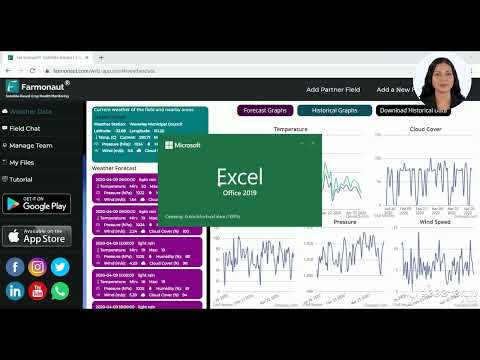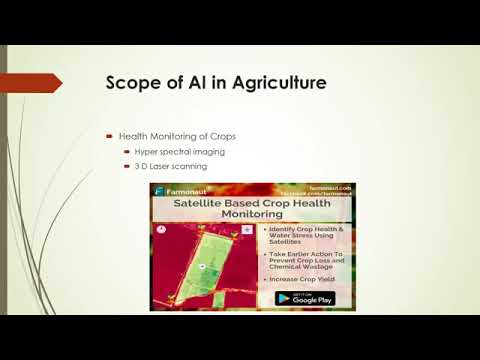7 Key Washington Solutions for Developing Countries’ Economic Crisis
“Developing countries face a $1.3 trillion annual investment gap for sustainable development and climate adaptation, according to recent estimates.”
- Global Context: The Developing Countries Economic Crisis
- Debt, Climate, and the Vicious Cycle
- Comparative Solutions Impact Table
- 1. Integrating Climate & Nature in Debt Sustainability Frameworks
- 2. Debt Relief & Restructuring Tied to Sustainable Development Investments
- 3. Expanding Contingency Clauses & Sustainability-Linked Finance
- 4. Scaling Up Debt-for-Nature and Debt-for-Climate Swaps
- 5. Mobilizing and Recapitalizing Multilateral Development Banks (MDBs)
- 6. Innovative Public and Private Climate Finance Instruments
- 7. Financing Climate-Resilient Infrastructure for Disaster Relief and Recovery
- How Farmonaut Supports Sustainable Agricultural Solutions
- FAQ – Addressing the Developing Countries Economic Crisis
- Conclusion & Next Steps
Global Context: The Developing Countries Economic Crisis
As we gather insights from the recent Washington DC meetings—where G20 finance ministers, the IMF (International Monetary Fund), and World Bank convene—the urgency of the developing countries economic crisis is undeniable. This crisis extends beyond trade; it is amplified by overlapping financial market stresses, mounting sovereign debt distress, and acute climate vulnerabilities. The world is witnessing a dangerous spiral where economic, environmental, and social risks compound one another, threatening resilience and long-term growth in emerging and developing economies.
Notably, the IMF reports that by early 2024, almost half of low-income countries—many small island states and least-developed economies—face imminent debt distress. As these pressures intensify, government resources in developing countries are diverted away from sustainable development investments, increasing vulnerability to shocks such as extreme weather events and further limiting prospects for sustainable economic recovery.
Debt, Climate, and the Vicious Cycle
The relationship between debt distress and climate crisis is deeply entwined. Every hurricane or drought drains valuable public funds for disaster relief and recovery financing, shrinking already tight fiscal space and leaving little room for climate change adaptation funding or nature conservation. As infrastructure is battered, agriculture production stalls, and food security unravels with every disruption, the cost of inaction rises, both economically and socially.
“Over 60% of low-income countries are at high risk of debt distress, hindering climate resilience and economic growth.”
This “vicious circle” becomes self-reinforcing: increasing debt repayments reduce resources for sustainable development, which increases exposure to climate risk and, in turn, raises borrowing costs. Only a bold, global approach addressing both financial and climate realities can break this cycle—one that Washington, DC policy solutions are beginning to shape.
Comparative Solutions Impact Table
To clarify Washington’s actionable blueprint for developing countries’ economic resilience and sustainability, we present a concise solutions impact table:
| Solution Name | Description | Target Issue | Estimated Investment Required (USD) | Estimated Impact Metric | Projected Timeline (Years) |
|---|---|---|---|---|---|
| 1. Debt Sustainability Frameworks with Climate/Nature | Integrate climate and biodiversity risks and benefits in fiscal assessments | Debt, Climate Adaptation | $5–10 billion (technical assistance & recalibration) | Reduced default rates; 0.5–1.2% GDP growth | 1–3 |
| 2. Debt Relief & Restructuring for Resilience | Mechanisms linking debt restructuring to sustainable development projects | Debt Distress, Sustainable Investments | $80–120 billion globally per year (IMF/World Bank estimates) | Improved liquidity, +1–3% in medium-term fiscal space | 3–5 |
| 3. Contingency & Sustainability-linked Finance | Disaster clauses and finance instruments responsive to shocks | Disaster Relief, Market Risk | $20–35 billion (marketwide) | 50% faster recovery times after disasters; lower risk premiums | 1–2 |
| 4. Scaling Debt-for-Nature/Climate Swaps | Debt swaps standardized for green/nature-positive investments | Debt, Conservation, Adaptation | $10–20 billion (scaling swaps) | Up to 3% annual emission reduction, improved biodiversity | 2–4 |
| 5. Boosting MDB Financing & Recapitalization | Expand Multilateral Development Banks’ (MDBs) lending capacity | Global Finance, Sustainable Investments | $250–500 billion capital mobilization | 2–3% GDP growth in recipient countries | 2–5 |
| 6. Innovative Green Finance Facilities (e.g., F2C2) | Finance Facility against Climate Change; mobilize private capital | Climate Mitigation/Adaptation | $100–150 billion initial, unlocking $1 trillion private capital | Large-scale investment flows; 5–10% emission reduction | 2–6 |
| 7. Financing Climate-Resilient Infrastructure | Equity-like instruments and PPPs for infrastructure adaptation | Infrastructure, Disaster Recovery | $60–80 billion annually | Reduced disaster losses; +2.5% fiscal space | 3–7 |
1. Integrating Climate & Nature in Debt Sustainability Frameworks
Why It Matters
Our economic future depends on how well debt sustainability frameworks evolve to reflect today’s planetary risks. Traditionally, these frameworks—used by the IMF, World Bank, and finance ministries—assess a country’s capacity to honor its debts. Yet, they seldom consider climate change impacts, biodiversity loss, or the value of climate adaptation funding.
The Path Forward
- Integrate extreme weather impact on economies (e.g., hurricanes, floods, droughts) into fiscal projections.
- Include metrics that recognize both environmental risks and the potential economic benefits from climate adaptation investments (mitigation, conservation, infrastructure upgrades).
- Encourage the IMF and World Bank to lead technical assistance and foster adoption of new analytical tools for debt sustainability.
Analogous to how carbon footprint tracking empowers businesses with real-time emission monitoring, updating fiscal frameworks will enable governments to better allocate resources for both fiscal and environmental sustainability.
Estimated Impact
When climate and nature are embedded in public finance decisions, countries benefit from lower risk premiums and improved investor confidence, leading to higher resilience and growth.
2. Debt Relief & Restructuring Tied to Sustainable Development Investments
Addressing Liquidity and Sustainability
With liquidity and sustainability facility models embedded in international financial assistance, governments can negotiate debt relief in exchange for pledges to invest in sustainable development and climate adaptation programming. This “debt-for-reform” approach addresses both short-term liquidity and the need for long-term, nature-positive growth.
- Countries in crisis can restructure or refinance debt, reducing fiscal pressure while channeling new funds toward vital adaptation and conservation measures.
- Debt restructuring deals can be conditional on verifiable investments—such as flood defenses or renewable energy infrastructure—ensuring that financial support results in measurable, climate-resilient growth.
This model ensures that donor contributions, particularly from the United States and other major economies, yield lasting development dividends.
Benefits for Governments & Donors
- Expanded fiscal headroom for adaptation, critical infrastructure, and relief projects.
- Stronger accountability and transparency in the use of relief funds, supported by mechanisms inspired by blockchain-based traceability platforms (ensuring project funding is tracked and verified at every stage).
3. Expanding Contingency Clauses & Sustainability-Linked Finance
Building Resilience into Debt Contracts
Washington’s proposals include expanding the use of contingency clauses in sovereign debt contracts, enabling countries to pause debt repayments during disasters (hurricanes, floods, or pandemics). By linking financial obligations to externally verified climate and nature indicators, both borrowers and lenders share risk and incentives for climate-resilient investments.
- Disaster clauses have proven to accelerate disaster relief and recovery financing, reducing economic damage from delayed response.
- Sustainability-linked bonds and loans align interest rates with measurable climate performance, rewarding strong adaptation efforts with lower costs of borrowing.
These evolving financial instruments increase fiscal flexibility for developing economies amid mounting climate shocks, and encourage markets to price climate risk directly into sovereign debt.
To support such mechanisms, timely verification of weather and agricultural conditions through technologies like remote sensing, as offered by Farmonaut’s Satellite Data API, can provide transparent, up-to-date data for lenders and policymakers alike. Comprehensive API documentation for developers is available as well.
4. Scaling Up Debt-for-Nature and Debt-for-Climate Swaps
From Pilot to Proven Solution
While still occupying a modest share of global climate finance, standardized debt-for-nature swaps and debt-for-climate swaps have demonstrated value in unlocking funding for environmental projects in the world’s most vulnerable countries—especially small island developing states.
- Debtor governments agree to conserve lands and ecosystems of global importance, and in return, receive a portion of their external debt forgiven or rescheduled.
- Such swaps raise dedicated funds for biodiversity preservation, emission reduction, and adaptation measures, while freeing up fiscal space.
For expanded impact, Washington and major creditors must support standardization, transparency, and scalability for these instruments—making them a viable channel for channeling both public and private climate finance into developing countries.
Farmonaut’s resource traceability tools can contribute to verifying on-the-ground conservation project outcomes, supporting credible reporting and impact assessment—a core feature for building trust with international partners.
5. Mobilizing and Recapitalizing Multilateral Development Banks (MDBs)
Supercharging Sustainable Development Investments
One of the fastest ways to boost sustainable development investments is to optimize the balance sheets and expand the lending capacity of Multilateral Development Banks (MDBs)—such as the World Bank, African Development Bank, and Asian Development Bank.
- Recapitalization enables MDBs to take on more risk, finance large projects in renewable energy, agricultural adaptation, and infrastructure, and provide technical assistance for project design and implementation.
- MDB reform helps catalyze additional private capital by offering guarantees, co-financing, and risk-sharing arrangements.
These strengthened institutions are crucial for reducing the investment gap—currently over $1.3 trillion—for climate adaptation funding and economic transformation in developing economies.
For the agricultural sector, platforms such as Farmonaut’s large scale farm management dashboard offer oversight and analytics at national scale, vital for allocating MDB funding efficiently and maximizing returns on adaptation investments.
6. Innovative Public and Private Climate Finance Instruments
Unlocking Trillions with Facilities like F2C2
To meaningfully mobilize private capital for climate mitigation and adaptation, new financial vehicles are essential. The Finance Facility against Climate Change (F2C2), as proposed in Washington, is a special-purpose investment vehicle capable of issuing green bonds backed by future donor commitments—unlocking potentially $1 trillion in private capital for climate investments.
- The F2C2 would primarily channel funds into developing countries for climate mitigation, adaptation, and infrastructure projects, with donor pledges serving as a credit risk backstop for private investors.
- Risk-sharing and guarantee mechanisms, similar in approach to satellite-powered crop insurance verification tools, can increase investor confidence and reduce capital costs.
By blending public and private climate finance, innovations like the F2C2 make previously unbankable projects viable, aligning risk appetites between investors, donor governments, and recipient countries.
7. Financing Climate-Resilient Infrastructure for Disaster Relief and Recovery
Equity-like Instruments & Insurance Partnerships
The importance of climate-resilient infrastructure financing cannot be overstated. Every year, extreme weather events (hurricanes, floods, droughts) can wipe out a decade’s worth of economic progress in days. By investing in sea walls, flood defenses, and resilient public assets, countries dramatically reduce the cost of disaster relief and recovery financing.
- Innovative “equity-like” instruments allow insurance firms and investors to gain returns based on the cost savings from reduced disaster payouts and accelerated recovery timelines.
- Public-Private Partnerships (PPPs) can mobilize expertise and funding for large-scale resilience projects.
- Accurate, satellite-based agricultural production monitoring platforms can help measure project benefits, supporting ongoing policy and finance decisions.
Farmonaut’s real-time carbon footprinting and land management features provide crucial data for project validation and ROI tracking, ensuring sustainable impact.
How Farmonaut Supports Sustainable Agricultural Solutions
In this new era of urgent climate adaptation funding and financing innovation, accurate resource tracking and transparent reporting are vital. Farmonaut offers end-to-end technology to close the data gap for farmers, governments, and financial institutions alike:
- Its satellite-based crop health monitoring platforms deliver essential intelligence for irrigation, fertilizer, and pest management—optimizing agricultural production and protecting yields from extreme weather.
- The Jeevn AI advisory system provides real-time, locally relevant agronomic advice—helping to reduce costs and build climate resilience at ground level.
- Fleet management and logistics solutions support efficient disaster relief logistics and resource allocation.
- Blockchain-based traceability offers transparent crop tracking, reducing fraud in relief and support schemes.
Farmonaut’s accessible web, Android, and iOS platforms democratize technology for all stakeholders, from smallholder farmers to ministries coordinating national climate adaptation plans.
Interested in advanced integrations for crop and weather monitoring? Check out Farmonaut Satellite Data API and in-depth developer documentation for building custom solutions.
For actionable support in crop loan and insurance verification, Farmonaut’s platform streamlines application, monitoring, and reporting for financial institutions and farmers.
Discover solutions for large-scale farm management and plantation/forest advisory to optimize productivity and sustainability at any scale.
FAQ – Addressing the Developing Countries Economic Crisis
-
What is the key focus of the 7 Washington solutions?
The core goal is to break the self-reinforcing trap of debt distress and limited climate investing in developing countries, thereby catalyzing sustainable development investments, unlocking relief financing, and promoting climate resilience. -
How do climate risks impact debt sustainability frameworks?
Traditional frameworks understate fiscal risk by ignoring the damage and recovery costs from extreme weather events, such as hurricanes, droughts, and floods. Integrating climate data yields a fuller picture of a country’s economic outlook and allows for prudent long-term planning. -
What role do MDBs and instruments like F2C2 play?
Multilateral Development Banks are critical for providing concessional financing and guarantees that crowd in private investment. F2C2-type vehicles raise far greater private capital by offering innovative, risk-targeted products backed by donor commitments, essential for scaling resilient infrastructure and adaptation efforts. -
Are debt-for-nature and debt-for-climate swaps scalable?
While not yet operating at global scale, these swaps have delivered significant funding for environmental restoration. Standardization, transparency, and mechanized verification—supported by digital traceability—are needed for expansion. -
How can technology providers like Farmonaut help?
By supplying real-time, satellite-derived agricultural and climate intelligence, Farmonaut empowers governments, financiers, and insurers to plan, monitor, and optimize adaptation and relief investments. Features like blockchain-based traceability and carbon footprinting foster credibility in climate reporting.
Conclusion & Next Steps
In conclusion, Washington’s seven solutions offer a realistic, action-oriented roadmap for addressing the developing countries economic crisis. Success depends on integrating climate and nature risks into all macro-fiscal frameworks, scaling up targeted debt relief, innovating finance, and investing in adaptation and resilience.
Global leadership, fresh resources, and innovative technology platforms—like those provided by Farmonaut—are vital. As we look ahead, it is our shared responsibility to ensure that investments in sustainable development, resilience, and climate adaptation not only avert crisis but also set the stage for a new era of equitable, sustainable growth for all.








